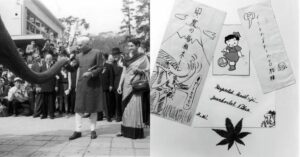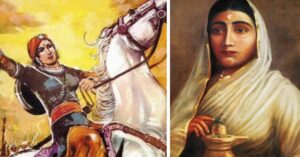Despite a Tiny Budget, This Man Built One of the World’s Largest Telescopes in India
Govind Swarup, one of the pioneers of Radio astronomy built telescopes that helped India become one of the leading countries for astronomy research.

Govind Swarup, one of the pioneers of Radio astronomy, and known as the ‘Father of Indian Radio Astronomy’ passed away on 7 September 2020 after a period of short illness at the age of 91.
This exceptional scientist made many notable contributions in this field of research, such as launching the Pune-based National Centre for Radio Astrophysics (NCRA) of the Tata Institute of Fundamental Research (TIFR), and building two world-class radio telescopes — the Ooty Radio Telescope located in Ooty, and the Giant Meterwave Radio Telescope (GMRT) located in Pune.
The discoveries made using these telescopes are what made India as one of the leading countries for astronomy research.
Early Years
Swarup was born on 23 March 1929, in the small town of Thakurdwara in the Moradabad district, Uttar Pradesh.
After obtaining his MSc degree from Allahabad University in 1950, he joined the newly formed National Physical Laboratory (NPL). His early work began in the area of paramagnetic resonance under the direction of physicist KS Krishnan. The duo began measuring the spin resonance of the electron which was considered a hot topic at the time.
In 1960 he completed his doctorate focussed on solar emissions in Harvard University, and later worked as an Assistant Professor at Stanford University till 1963.
The same year he returned to India and started working at the Tata Institute of Fundamental Research at the invitation of Dr Homi J Bhabha.
Giant Meterwave Radio Telescope (GMRT)
In an interview with the Times of India, Rajesh Kumble Nayak the head of the Indian Institute of Science Education and Research, who works on gravitational data wave analysis, said what set Professor Swarup apart was his ability to innovate.
“When he was designing the 45-m GMRT dish antennas, India’s funding in science was limited. To cut expenses and make it maneuverable, he used stainless steel mesh instead of solid metal for the large dish. It also reduced the wind load and was acclaimed internationally,” Nayak said.
This telescope is used widely by scientists from all over the world to study astronomical bodies. In August 2018, with the help of this telescope scientists identified the most distant galaxy ever known which is located at a distance of 12 billion light-years.
In February 2020, the GMRT helped to witness the biggest explosion in the history of the universe – The Ophiuchus Supercluster explosion.
The Ooty Radio Telescope
Built-in 1970 with a budget of Rs 60 lakhs this telescope is a 530 m long and 30 m tall cylindrical parabolic antenna.
According to a news article in The Hindu, the ORT celebrated its 50th Anniversary in February 2020. During the celebration retired professor Pramesh Rao, who was involved in setting up the telescope says, “The ORT was one of the first radio telescopes that were set up in the country, and the first observations of a lunar occultation event were made on February 18, 1970.
The telescopes are arranged on a suitably-inclined hill in Southern India to make the rotation axis parallel to the Earth’s rotation axis, which means it can follow a source from the rise to set. It is one of the most sensitive radio telescopes in the world and takes full advantage of India’s proximity to the equator.
According to another news article, using the telescope, Swarup and his students proved that radio source counts were consistent with the predictions of the Big Bang theory. Apart from that, the telescope has contributed to the study of pulsars which are stars that cannot be seen but send out radio signals, distant radio quasars which are astronomical objects formed by gas spiraling into a massive black hole.
Achievements
In his lifetime, Professor Swarup received several awards such as the Hershel Medal of the Royal Astronomical Society in 2005, Padma Shri in 1973, the URSI Dellinger Medal in 1990, and the Grote Reber Medal of Australia in 2007.
According to a news report, some of his other contributions to the world include the discovery of type-U solar bursts an extreme space weather phenomenon. This discovery was made along with a research group and equipment that he set up in India. Developed the gyro-radiation model for microwave solar emissions.
Tributes
Somak Raychaudary, the director of Inter-University Centre for Astronomy and Astrophysics, took to twitter to pay his tributes to Govind Swarup. In his tweet, he wrote that doctor Swarup was one of the most positive persons he has met in his life, and that his ideas seem to sparkle out of his imagination on any issue to do with science and education.
Dr #GovindSwarup #FRS, who passed away today at 91, showed us that with ingenuity and confidence, he could build the world-best scientific facility #GMRT in his field in India using indigenous resources. Om Shanti. #AtmaNirbharBharat https://t.co/hTJOXbUwfg pic.twitter.com/QXUH7YL6i7
— Somak Raychaudhury ?? (@somakrc) September 7, 2020
K Vijay Raghavan, the Principal Scientific Adviser to the Government of India remembers Professor Govind was an ever-smiling scientist who took up impossible tasks and inspired colleagues to achieve them.
Thread. With Professor Govind Swarup’s demise, the world of astronomy has lost a great scientist, institution-, and telescope- builder. Ever-smiling, not one to take a no for anything he wanted to be done, he took on many impossible tasks, inspired colleagues to accomplish them.1 pic.twitter.com/dJMFN6sIxh
— Principal Scientific Adviser, Govt. of India (@PrinSciAdvGoI) September 7, 2020
(Edited by Gayatri Mishra)
This story made me
- 97
- 121
- 89
- 167
Tell Us More
We bring stories straight from the heart of India, to inspire millions and create a wave of impact. Our positive movement is growing bigger everyday, and we would love for you to join it.
Please contribute whatever you can, every little penny helps our team in bringing you more stories that support dreams and spread hope.



















